The growing importance of ADR and why more businesses are choosing it over litigation
Over the past decade, and especially in the years leading up to 2025, Australian businesses have increasingly turned to Alternative Dispute Resolution (ADR) to resolve commercial disagreements. What used to be seen as an optional pathway is now, in many cases, the preferred one. Rising court delays, increasing legal costs, and a stronger emphasis on preserving commercial relationships have all contributed to ADR’s growing prominence.
We regularly work with clients who are weighing up the best approach to resolving a dispute. While litigation will always have a place, there is no question that ADR is becoming the more practical, strategic, and commercially sensible option for many businesses.
Why ADR is becoming the default first step
Traditional litigation can be lengthy, costly, and adversarial. Even straightforward matters can take years to reach a final hearing, and most businesses cannot afford the disruption, uncertainty, or reputational implications that come with drawn-out proceedings.
By contrast, ADR (which includes mediation, negotiation, conciliation, and structured settlement discussions) allows parties to retain more control. The process is typically quicker, less formal, and far more flexible than the court system. Rather than waiting for a judge to hand down a binding decision, parties can shape their own outcomes and agree on solutions that make sense commercially.
Preserving relationships and reducing stress
One of the most significant benefits of ADR is its ability to preserve working relationships. Litigation is inherently adversarial; parties are positioned against each other, evidence is dissected, motives are questioned, and by the end of the process, any opportunity for continued cooperation is often gone.
ADR takes a different approach. The focus is on communication and problem-solving rather than fault-finding. This is particularly valuable in industries where businesses depend on long-term partnerships - construction, retail supply chains, franchising, professional services, and family-owned operations.
For many clients, ADR is also simply less stressful. Without the rigid procedural requirements of court processes, parties can engage more openly, explore creative options, and avoid the pressure and unpredictability that often accompany litigation.
Faster resolution in a congested system
Court backlogs across Australia have grown considerably in recent years, with some matters taking more than 18 months to be listed for hearing. For businesses facing operational or financial pressure, those delays can be damaging.
ADR offers an opportunity to resolve disputes far more quickly. Mediations can often be arranged within weeks. This accelerated timeline can be crucial for businesses that need certainty to move forward, whether that involves continuing operations, securing new contracts, or satisfying the expectations of investors or insurers.
Cost-effective and commercially sensible
Litigation costs can escalate rapidly. Legal fees, expert reports, discovery obligations, and court appearances all add up, often making the fight disproportionately expensive compared to the issue in dispute.
ADR is almost always more cost-effective. The shorter time frame, reduced formality, and streamlined process keep expenses in check. Even if a matter does not fully resolve at mediation, it often leads to partial agreements or narrow issues, reducing the time and cost of any subsequent litigation.
For many businesses, ADR is therefore a commercial decision.
Confidential and less damaging to reputation
Court proceedings are generally public. Judgments are accessible online, filings can be viewed by third parties, and disputes involving well-known businesses may attract media attention.
This level of transparency is not always desirable, especially where commercially sensitive information is involved.
ADR, on the other hand, is confidential. Discussions remain private, documents are not published, and parties have greater control over what becomes public. For clients concerned about brand protection or maintaining goodwill, confidentiality can be one of ADR’s most compelling advantages.
Where ADR works best
While ADR is useful across a wide range of industries, its benefits are particularly clear in disputes involving:
- commercial contracts
- partnership and shareholder disagreements
- property and leasing conflicts
- franchising issues
- supply-chain and trade disputes
- employment-related matters
- family-owned and closely-held business conflicts
In these situations, the ability to resolve issues quickly, discreetly, and collaboratively can make a significant difference to the ongoing success of the business.
How we support clients through ADR
At JCL Law Partners, we help clients prepare for and participate in ADR processes from start to finish. This includes analysing the commercial and legal issues, developing a negotiation strategy, preparing documentation, and representing clients in mediation or structured negotiations.
While ADR is designed to be less formal, it still requires careful preparation. Knowing the strengths and weaknesses of your position, understanding your best alternatives, and entering the discussion with clarity and structure can dramatically improve your chances of achieving a favourable outcome.
Importantly, we also help clients determine when ADR is appropriate - and when litigation may be unavoidable. Not every matter is suited to early resolution, and in some cases, court intervention is necessary to protect assets, enforce rights, or prevent ongoing harm.
The right time to seek help
Disputes rarely resolve themselves. The earlier a business seeks advice, the more options are available, whether through ADR, negotiated settlement, restructuring, or, if necessary, litigation.
ADR is not a sign of weakness. It is a practical, commercially focused tool that gives businesses greater control, reduces cost, limits risk, and promotes stability. As the business landscape becomes more complex and court delays continue to grow, ADR’s relevance will only increase.
At JCL Law Partners, we are committed to helping businesses across Queensland navigate disputes with confidence, clarity, and commercial insight. If your business is facing a conflict, now is the time to understand your options and to explore solutions that protect your long-term interests.
JCL Law Partners Welcomes Former ASIC Lawyer Adam Carr as Senior Associate
JCL Law Partners is pleased to announce the appointment of Adam Carr as a Senior Associate.
Adam brings close to a decade of experience in insolvency and litigation. Having worked at regulators for both personal and corporate insolvency, he offers a unique and intimate understanding of the industry from a regulatory perspective. His insights put him in a strong position to better advise clients on potential risks and issues with regulators.
His most recent role was at ASIC, where he was an executive-level lawyer responsible for the successful administration of the Assetless Administration Fund and worked within the enforcement and compliance group regulating registered liquidators. Adam has also worked in private practice with specialist litigation and insolvency law firms and the Australian Financial Security Authority (AFSA).
Adam’s deep regulatory experience provides a unique perspective on insolvency matters. He is among few lawyers in Australia who have worked in a team responsible for the regulation of liquidators, equipping him with an exceptional understanding of the industry. This first-hand experience allows him to provide strategic and informed advice to insolvency professionals, including liquidators and bankruptcy trustees. Additionally, he has worked across a broad range of insolvency and litigation matters in private practice.
Admitted as a solicitor of the Supreme Court of Victoria and the High Court of Australia, Adam currently holds an unrestricted practising certificate in Queensland. He takes a proactive approach with his clients and has a ‘get it done’ attitude when tackling complex legal issues.
Welcome to the team Adam - we look forward to the expertise and insight that you will bring to our clients.
Read the original article here.
Are beneficiary's always entitled to access trust documents?
Trust documents are commonly understood to include ‘those which evidence or record the nature, value and condition of trust assets.’ Relevantly, trust documents have been distinguished from those which are merely prepared by the trustee for their own purposes, with Hartigan Nominees deeming that documents which disclose deliberations about how the trustee should exercise their discretionary powers, are not trust documents. Similarly, certain correspondence between trustees does not constitute trust documents.
While beneficiaries of a trust have a prima facie right to inspect trust documents, disputes between the beneficiaries of a trust and Trustees, regarding access to documents and information are commonly encountered, with case law offering competing perspectives as to the circumstances which give rise to the provision of trust documents to beneficiaries.
In Re Londonderry’s Settlement, the Court held that as trust documents are property of the trust, the beneficiaries retain a proprietary interest in them. In doing so, it noted that this interest in trust property gives rise to the right to access trust documents.
Conversely, in Schmidt v Rosewood Trust, the court held that a beneficiary does not have an equitable interest that gives rise to an inherent right to view trust documents and that a trustee may therefore refuse a beneficiary’s request to inspect trust documents. However, as the Court retains an inherent jurisdiction to oversee the correct administration of trusts, a beneficiary may seek that the Court compel the trustee to enable inspection by the beneficiary.
Although the High Court is yet to make an explicit ruling as to the preferred approach, it relied on Schmidt in the 2017 decision of Palmer v Ayres to support the Court’s authority to compel the provision of information. Schmidt has also been followed in recent cases in the both the Federal Court and the New South Wales Supreme Court, whilst the Victorian Supreme Court relied on the Londonderry approach in the 2016 decision of Duetsch v Trumble.
In circumstances where the Court has adopted the Schmidt approach, it has relied on the following considerations to determine whether disclosure is warranted to safeguard the proper administration of the trust:
- Scope of requested documents
The Courts have traditionally been less inclined to grant access where the beneficiary seeks a wide scope of documents. Relevantly, requests for access to all documents have typically been perceived as a ‘fishing expedition’, with the Court instead favouring access in circumstances where select documents are sought to address a specific issue in the administration of the trust.
- Documents already disclosed
The disclosure of trust documents serves to ensure the beneficiary has sufficient information to evaluate the proper administration of the trust. As such, if a Court deems that the trustee has already made genuine attempts to provide appropriate information, it will likely determine that no further disclosure is required.
- Confidentiality
Trustees have traditionally been entitled to reject access to trust documents containing confidential information on the basis that disclosure is not in the best interest of all beneficiaries. Although there exists debate over whether confidentiality remains a full defence to disclosure, Justice Hammerschalg in Silkman posited that is nevertheless remains a necessary consideration.
- Secrecy
In some circumstances a trust deed may contain a provision which mandates that the details of the trust remain secret from its beneficiaries. Although the courts are yet to consider whether such a provision inhibits disclosure, the existence of a secrecy provision will likely be a relevant consideration of the Court in determining whether to exercise its discretion.
- Necessity
As the Court’s jurisdiction to intervene in trust matters serves to ensure proper administration of the trust, access will only be granted where beneficiaries ought to be privy to the documents. As such, if the requested documents will not cure a deficiency in the trust, the court is unlikely to exercise its discretion to order disclosure. To date, case law fails to signal a clear precedent as to how a court will determine a beneficiary’s request to access to trust documents, however, it does appear that the limited approach contained in Schmidt is being preferred by courts over the expansive approach contained in Londonderry.
High Court clarifies definition of ‘officer’ under Corporations Act
In Australian Securities and Investments Commission v King [2020] HCA 4, the High Court of Australia recently examined the scope of the definition of the term “officer of a corporation” in section 9 of the Corporations Act 2001 (Cth). The Court unanimously held that there is no requirement that a person be a named officer of the corporation to be captured by the definition. The test to establish whether a specific individual is an officer is whether they have the capacity to “significantly affect the financial standing of the company”.
Case Facts
Mr King, was the CEO and executive director of MFS Ltd, the parent company of the MFS Group of companies. The MFS Group was involved in funds management and financial services.
The Premium Income Fund (PIF) was a managed investment scheme operated by the MFS Group with an entity known as MFS Investment Management Pty Ltd (MFSIM) acting as the responsible entity. In June 2007, MFSIM entered into a $200 million loan facility with the Royal Bank of Scotland to be applied solely to the PIF. On 27 November 2007, MFSIM and senior personnel in the MFS Group arranged for $150 million to be drawn down from the loan facility. $147.5 million was disbursed by MFSIM to pay the debts of other companies in the MFS Group.
While two disbursements were made, only one was ultimately relevant to the High Court. A disbursement of $130 million was made on 30 November 2007 to an entity known as MFS Administration that acted as the treasury company of the MFS Group. On the same day the funds were received, MFS Administration paid $103 million to Fortress Credit Corporation (Australia) II Pty Ltd (Fortress). This money was paid in satisfaction of a short-term loan made to another MFS Group entity that was due to be repaid on that same date.
This series of events culminated in ASIC bringing enforcement proceedings against MFSIM and several of its officers for breaches of the Corporations Act. MFSIM was held to have contravened subsections 601FC(1) and (5) in relation to its duties as the responsible entity of PIF, and had breached section 208(1) by providing a financial benefit to a related party. Ay trial and on appeal to the Queensland Court of Appeal, Mr King was found to been knowingly involved in MFSIM’s contraventions and by consequence of section 79(c), was also held to have contravened sections 601FC(5) and 209(2).
Legal Issues
ASIC further contended Mr King was liable under s 601FC as an officer of MFSIM despite the fact he had ceased being a director on 27 February 2007 some nine months prior to the events. The Queensland Court of Appeal had held that Mr King was not an officer in the sense of having capacity to “affect significantly the corporation’s financial standing”. The Court deemed it was necessary for AISC to show Mr King had acted in an office of MFSIM in order to fall within the definition of s 9(b)(ii). ASIC appealed this finding contending that the Court had misconstrued the definition of “officer” by requiring ASIC
High Court Findings
The High Court unanimously found that the Court of Appeal erred in ruling that ASIC was required to prove Mr King had acted in an office of MFSIM in the sense of being in a ‘recognised position with rights and duties attached to it’. The Court adopted a literal interpretation of s 9, stating that subsection (b)(ii) required an inquiry into the role the person in question plays in the corporation. Such an inquiry is made on a case by case basis, considering the entire facts and circumstances of the individual and corporation including: the role of a person; what they did or not do to fulfil that role; and the relationship between their actions or inaction and the financial standing of the corporation.
Mr King was involved in the management of MSFIM and had not only the capacity to affect the financial standing of the entity, but actively intervened in its management. Accordingly, Mr King was held to be an officer of MSFIM despite not holding a formal executive role at the time of transaction.
JCL Comment
Importantly this decision makes it clear that individuals who hold a named office in a corporation will be captured by paragraph (a) of the s 9 definition, individuals who do not hold a named office may be captured by paragraph (b). This reasoning is consistent with the ‘shadow director’ regime which similarly provides that individuals that do not hold the office of director may still be considered a director where they have the capacity and custom of being able to affect the company.
This case is also important as it was made in the context of a group of companies. The Court expressly noted that corporate structure would not assist in avoiding liability for breaches of statutory prohibitions.
Does an employee owe a fiduciary duty for credit limit increases?
Employees owe certain fiduciary duties to their employers. Generally, this means an employee cannot do either of the following things:
- Make or pursue a personal gain in circumstances in which there is a real and substantial possibility of a conflict of interest arising between the personal interests of the employee and the interests of the employer (the no conflict duty); and
- Make or pursue a personal gain based by using his or her position as an employee or by using information or opportunities received in the course of his or her employment (the duty of trust).
As these duties are quite broad in scope a variety of circumstances could constitute a breach of either duty. A recent case in the Queensland Court of Appeal examined whether an employee owed a fiduciary duty to his employer in regard to providing a credit limit increase to a customer.
In Metal Manufactures Limited v Johnston & Anor [2020] QCA 42, a company was permitted to purchase goods on credit up to an amount of $20,000 which was later extended to $50,000. However, the company was unable to keep within this agreed credit limit and, with the assistance of an employee of its supplier, was ultimately able to purchase goods up to an amount of $325,797.50.
The supplier sought to recover this owing account; however, the company was wound up in insolvency prior to trial leaving no possibility of recovery. A case was instead bought against the company’s director and the employee of the supplier.
The supplier alleged a breach of fiduciary duty on the part of their employee for allowing the company to purchase goods beyond their credit limit in contravention of section 182(2) of the Corporations Act 2001 (Cth). The case against the director was that he had knowingly, or ought to have know, assisted the employee in breaching his duty. The case was accordingly dependant on successfully proving a breach of duty by the employee.
There is a long line of authority establishing that employees owe a fiduciary duty to their employers. This is also expressly indicated in section 182(2) of the Corporations Act. Not all employees will owe a fiduciary duty however and accordingly it must be established that a particular employee owes by looking at all circumstances of the case.
In this case the Court did not find that a fiduciary duty was established. Whilst the employee was a store manager, he was not a senior employee in the overall context of the business, did not have discretionary power to allow a customer credit beyond what was already agreed. On this basis the employee was not deemed to be in a position of special trust or confidence.
Even if a fiduciary duty had been established, the claim still may not have succeeded. While the Court was willing to accept that the employee had deliberately allowed unauthorised supply beyond the credit limit which was “consciously wrongful” and took deliberate steps to conceal the conduct, the Court was not willing to label the conduct dishonest in the sense of impropriety.
The basis for this finding was an absence of evidence demonstrating the employee received some personal benefit, either from his employer in terms of commission, salary increase or promotion; or from the company or director in the form of a bribe.[iv]
Whilst a fiduciary duty could not be established on these particular facts, it may still be possible for an employee of a similar position or standing to be considered a fiduciary of their employer. Additionally, further causes of action may be pleaded against an employee; simply not being in a fiduciary relationship will not be sufficient to avoid liability.
Corporate Law and COVID-19
Treasurer Josh Frydenburg has announced a series of potential temporary economic measures in response to the fluid COVID-19 situation. This temporary package has implications for bankruptcy, insolvency and corporate law.
We have summarised the proposed measures below.
Bankruptcy changes
- Increase in the minimum debt threshold for a creditor-initiated bankruptcy procedure from $5000 - $20,000;
- The time to respond to a bankruptcy notice increased from 21 days to 6 months;
- An extension of the protection period for individual’s declaring an intention to present a debtor’s petition extended from 21 days to 6 months.
Insolvency Changes
- Increase in minimum amount for a statutory demand from $2000 - $20,000;
- Increase in time to respond to a statutory demand from 21 days to 6 months;
- Temporary suspension of directors’ personal liability for insolvent trading for six months (egregious cases of dishonesty will still attract criminal liability);
- Insertion of s 588GAAA which provides an additional temporary safe harbour provision during the six-month period.
According to the Bill, the amendments to times for compliance will only apply to procedures commenced on or after the commencement of the amending Schedule. The temporary increase in the monetary threshold will be repealed at the end of the six-month period which starts on the date of commencement.
In addition to the above relief, the Australian Investment and Securities Commission has announced it has adopted a ‘no-action’ position in regard to company AGM’s including:
- a two-month ‘no-action’ position in regard to entities with a financial year end of 31 December that have not held an AGM by 31 March 2020;
- the holding of virtual AGM’s;
- sending supplementary notices of AGM electronically;
- non-compliance with section 249J of the Corporations Act.
ASIC encourages the use of technology to facilitate virtual AGMs and electronic communication, however the company constitution will determine whether or not this is possible. ASIC cannot amend the constitution to allow this, however irregularities may be addressed via other methods.
No changes to financial reporting obligations have been announced yet, however ASIC is monitoring the situation.
While ASIC is entitled to indicate that it will not exercise its regulatory powers in a certain way, this does not prevent third parties from taking action against a company or a Court ruling that conduct has breached legislation. It is highly advisable to seek legal advice prior to undertaking a course of action.
Fugitive sentenced to 3 years jail for $200k tax fraud
A 56-year-old man has been sentenced to three years and three months in jail and ordered to pay over $150k in reparations after he fraudulently obtained and attempted to obtain more than $200,000 from the ATO.
Peter Garven appeared before the Sydney District Court on 30 May 2019, which heard that between October 2002 and July 2004, Mr Garven lodged three income tax returns in which he fraudulently obtained $102,504 in refunds and attempted to obtain a further $41,758. In doing so, Mr Garven claimed to have received more than $150,000 in salary and wages from the University of New South Wales, despite the university having no record of such payments.
The court also heard that between August 2002 and July 2004, Mr Garven fraudulently obtained $51,684 in GST refunds in his capacity as the sole director of Peter Garven Consulting and Garven Resources.
The hearing follows a tumultuous series of events which ensued after Mr Garven admitted his claims were false and vowed to lodge amendments in 2004. Namely, the ATO commenced an audit after the amended returns were never received. Mr Garven then failed to appear for his trial in March 2009, with a warrant later issued for his arrest. Mr Garven subsequently went into hiding and was registered on the missing persons list, before being arrested in 2017 in the Watagan Mountains.
Ultimately, the decision serves as an important reminder of the implications of failing to comply with tax obligations.
Close but no cigar: taxpayer jailed after creating fake business to obtain $1.5M tax refund
A 39-year-old South Australian man has been sentenced to 2 years and 4 months imprisonment after he attempted to obtain almost $1.5 million in tax refunds.
On 31 July 2019, Adam Hamshere appeared before the Adelaide District Court which heard that in January 2016, Mr Hamshere registered a fake business which purported to sell cigars. In doing so, Mr Hamshere obtained an ABN and later registered for GST and Wine Equalisation Tax (WET), backdating the GST registration to commence in January 2015.
In March 2016, Mr Hamshere lodged five business activity statements (BAS) in which he claimed an entitlement to $1,444,069 in GST and WET refunds.
After becoming the subject of an ATO audit, Mr Hamshere frequently phoned the ATO demanding immediate payment of the refund and claiming that his paper and electronic records had been stolen. However, despite thorough investigations into Mr Hamshere’s affairs, the ATO found no evidence to substantiate his business activity or his claims that his records had been stolen.
Ultimately, Judge Muscat found that Mr Hamshere had attempted to dishonestly obtain a financial advantage from the Commonwealth, pursuant to sections 11.1 and 134.2(1) of the Criminal Code 1995.
Acting ATO Assistant Commissioner David Mendoza asserted that the strong sentence is a timely reminder of penalties facing those who attempt to cheat the tax system. In doing so, he asserted that “those people who try to evade or cheat the tax and super system will get caught and we will take firm action. We will not tolerate this type of behaviour.”
10 tips for effective settlement agreements
When parties to a dispute reach a compromise, it is important that the terms of the compromise are recorded in writing and that the settlement agreement is binding.
A settlement agreement recognises that the parties to a dispute have formulated a resolution and signals the end of the dispute. The agreement may be entered into at any time before a proceeding commences, and if proceedings have commenced, at any time before judgment is handed down.
Important Considerations
In drafting a settlement agreement, it is important to have regard to some key considerations:
-
- The agreement should clearly state the terms of settlement;
- The agreement should clearly state and identify the parties to the agreement, to ensure the person executing the agreement has authority to execute. This is particularly so where a party is a company or a Trustee of a trust;
- Any conditions to the settlement that are required to be met prior to either payment of the settlement sum or the proceedings being discontinued;
- The timing of the payment of a settlement sum and also the consequences of non-payment;
- Where a settlement sum is being paid, tax implications may arise and need to be considered;
- Generally settlement agreements include a unilateral release of claims from both parties and it should state the extent of the releases given;
- If proceedings are on foot, the settlement agreement should include clear terms on the discontinuance of the proceedings including whether there will be any order as to costs;
- The agreement should be clear on which party is bearing the cost of preparing the agreement. Generally, each party bears their own costs;
- Commonly, settlement agreements include an obligation that the parties must keep the terms of the agreement confidential, except for limited disclosure purposes;
- The settlement agreement should contain a term with respect to the governing law of the agreement should a dispute/breach arise.
Effective Settlement Negotiations
Here at JCL, we strive to understand our client’s needs and provide the best overall solution. We encourage mediation and compromise. If the parties to a dispute can reach a compromise and avoid the costs, time, and stress of having to go to court, this is always the best result. All parties should feel comfortable with the outcome however, compromise is based on give and take.
Settlement negotiations can be daunting and overwhelming. Here are some practical tips for effective settlement negotiations.
Before entering into settlement negotiations:
- Have an understanding of the outcome you or your client are hoping to accomplish. What is the most optimistic result that realistically could be achieved? Also importantly, what is your “bottom line”. Identifying these two positions will give you a direction and focus and will enable you to negotiate towards a specific goal;
- Be prepared. Know your case;
- Take into consideration the interests and goals of the other party and what outcome they are trying to achieve. This will assist in negotiating a resolution.
During settlement negotiations:
- Do not get personal. Focus on resolving the problem;
- Ask questions and understand the other party’s position. There may be valid reasons limiting the other side’s ability to reach an agreement. There may be other issues hindering a resolution which once known, can be discussed and resolved;
- Explore alternatives to a monetary only resolution;
- Do not leave the room until the agreement is recorded in writing. You will likely not have enough time to prepare a settlement agreement, but have the parties sign a document that sets out the general terms that have been agreed.











